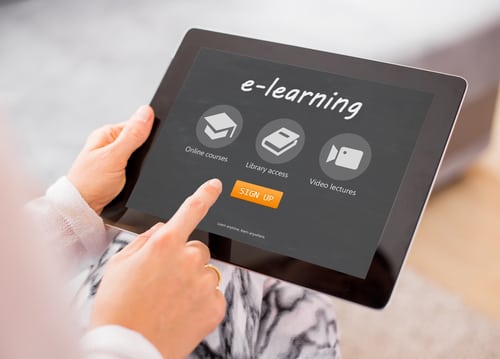To meet the demand and challenge of providing quality eLearning experiences for students, institutions must practice sound instructional design when creating each online course. Effective eLearning is centered on many of the same instructional design principles as traditional learning, with some minor enhancements for the digital environment. Four elements are especially important when developing eLearning for higher education.
1. Course Design
Design eLearning courses with the learner in mind. Begin by “chunking” content into small segments such as learning units, and make sure your course has a consistent layout and is easy to navigate. Materials in your course should be engaging. Use audio and video to reach various learning styles and engage all types of learners.
Use tools in the Learning Management System (LMS) in ways that go beyond teacher-centered instruction.
2. Interaction and Collaboration
eLearning should not be isolated. College students can learn from each other as well as their instructor. Build in opportunities for collaboration with peers. Student-to-student interaction and collaboration builds skills such as teamwork, cooperation, and negotiation. Include a rubric to explain how you will grade student interaction.
3. Assessment
Ongoing assessment allows you and your learners to determine if course objectives are being met. eLearning assessments should require higher-order thinking such as analysis, synthesis, critical thinking, or problem solving. Assessments should imitate real environments and allow learners to demonstrate workplace skills. Include multiple types of assessments such as research projects, quizzes or tests, discussions, case studies, or problem-based activities.
4. Learner Support
Support learners in their use of the LMS. Include tutorials on the course or an orientation. Contact information for the course instructor should be easy to find and include email, phone, or text message availability. Lastly, course materials should use standard formats to ensure accessibility. Pay special attention to text color and size, audio and video controls, and alt text in images. Include transcripts for all audio and video resources to enable students who use assistive technologies (screen readers, voice recognition, etc.) to participate.
Apply each of these four elements in your higher-education eLearning courses to produce engaging, interactive, collaborative, and effective experiences for your students.




